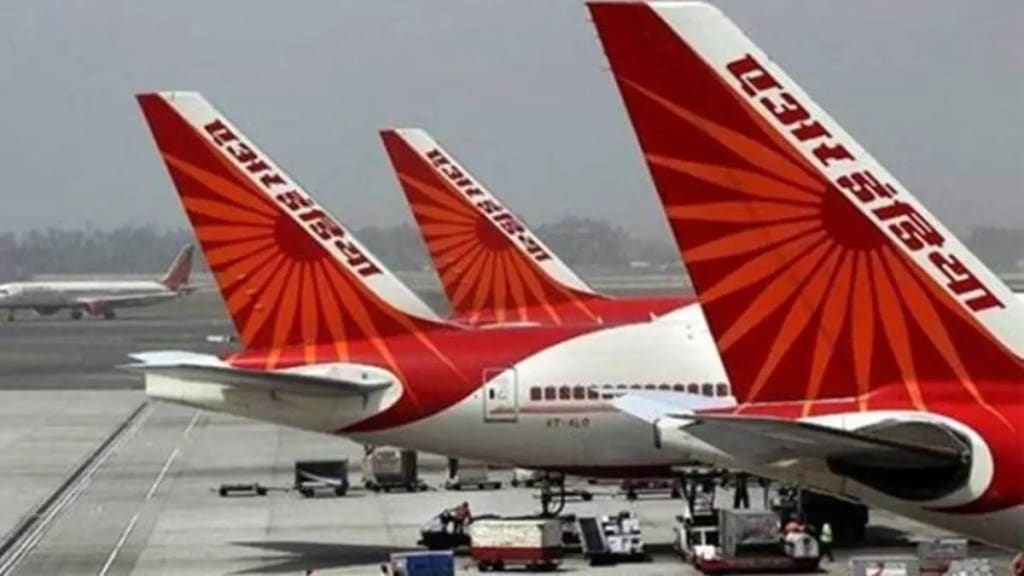A two-member inspection team from the Directorate General of Civil Aviation (DGCA) has uncovered lapses in Air India’s internal safety audit procedures, prompting a regulatory investigation.
In response, Air India, through its spokesperson, emphasized that all airlines undergo routine safety audits conducted by regulatory authorities and other relevant entities. The spokesperson conveyed that Air India actively participates in these audits as part of its commitment to continuously evaluate and enhance its operational processes. Furthermore, the airline stated its dedication to promptly addressing any concerns brought to the attention of the relevant authorities.
What does the Air India’s inspection report say?
According to the inspection report submitted to the DGCA, Air India was obligated to perform regular safety spot checks across various operational areas, including cabin surveillance, cargo, ramp, and load handling. However, during a random inspection of 13 safety checkpoints, the inspection team found that Air India had generated false reports for all 13 cases.
Upon further investigation, including cross-referencing with CCTV footage, records, statements from personnel, shift logs, General Declarations (GD) lists, passenger manifests, and more, it was determined that the 13 reported spot checks, purportedly conducted in Mumbai, Goa, and Delhi stations, had not been carried out as claimed. The inspection team noted that these false spot-check reports were fabricated upon the DGCA team’s request.
Additionally, the inspection report highlighted that these counterfeit spot-check reports lacked the signature of the Chief of Flight Safety (CFS), the authorized signatory for such reports.
The inspection team conducted their visit to Air India’s Gurugram office in Haryana on July 25 and 26, and subsequently, they reported these lapses in the ‘Deficiency Reporting Form’ (DRF).
When contacted, DGCA Director General Vikram Dev Dutt confirmed that the matter is currently under investigation by the regulatory authority.
Air India Inspection: Detailed Report
According to the inspection report, the checklists were physically signed by an auditor from the Quality Management System (QMS) Department, which does not fall within the DGCA’s approval and inspection purview and has different qualification and eligibility criteria compared to industry standards. The report noted a lack of documented authority delegation to this auditor, with no email correspondences or authorizations from the CFS regarding the aforementioned spot checks.
Regarding the Pre-Flight Medical Examination (alcohol consumption test of pilots), Air India reported conducting the spot check, but the inspection team found that the airline’s internal auditor had not physically visited the required facility, as mandated by checklist items. The report also highlighted the absence of equipment details and test readings on the checklist, with all points marked as satisfactory without actual spot-check execution.
In the area of ramp services, the inspection team identified a discrepancy where the airline’s spot checklist mentioned a duty officer’s name who was not present during the shift in question. The report revealed that no spot checks had been conducted on that date in that specific area. Similar issues arose in the cabin surveillance spot check, which the airline claimed to have completed on July 16, 2023, but the inspection team found that it had not occurred, with the purported auditor merely traveling as a passenger with family members on the flight.
Additionally, the inspection team noted that Air India failed to provide the flight safety auditors’ list in a timely manner. Subsequently, the list was only provided at the end of the inspection, including auditors from the QMS, whose qualifications and eligibility differed from those specified in the Flight Safety Manual (FSM). The team emphasized that as QMS does not fall under DGCA jurisdiction, CAR (Civil Aviation Requirements) does not outline qualifications for QMS auditors. Furthermore, the operator was unable to provide the actual flight safety auditors’ list and their authorizations when requested by the inspection team to distinguish between flight safety and QMS auditors.
(With PTI Inputs)

